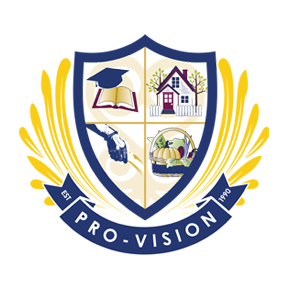Celebrating Holidays Across Cultures and in the Community
The holiday season is a special time here at Pro-Vision Academy. We strive to instill positivity, joy and understanding in our students, and the holidays provide us with unique teaching opportunities to do just that.
In the U.S. where there is a diversity of people and cultures, the holidays are celebrated in many different ways. However, many of our students are only familiar with some of the Christmas holiday traditions. In the Manhood Development Program we teach the students about how different cultures celebrate the holidays, including Christmas, Kwanzaa, Hanukkah and the Chinese New Year. It gives the students a new perspective on what the holiday season means to others and a better respect for their own family celebrations.

Christmas
Christmas is a well-known Christian holiday that celebrates the birth of Jesus Christ on December 25th. The history of the holiday dates back more than two thousand years, and during that time many traditions have formed around the world. For instance, the tradition of decorating a Christmas tree began in Germany, but didn’t become commonplace in America until the 1800s. Giving gifts is a longstanding tradition that began centuries ago. The religious purpose of gift giving is to remind us of the gifts the Three Kings brought baby Jesus. Santa Claus is also based on the religious figure Saint Nicholas of Myra who was known for giving gifts. Though many complain that the Christmas holiday has been overly commercialized, it still holds significant religious meaning today for billions of people across the globe.
Kwanzaa
The Kwanzaa celebration was created in 1966 by Dr. Maulana Karenga. Dr. Karenga developed the idea of Kwanzaa based off of African harvest celebrations. His hope was that the 7-day Kwanzaa celebration would bring people of African decent together in sharing their cultural heritage and preserving it at the same time. Though Kwanzaa is held between December 26th and January 1st it is meant to be a social celebration rather than a religious one. Today, less than 50 years later, millions of people around the world celebrate Kwanzaa with traditions that include passing the Unity Cup, the lighting of the Kinara and holding discussions about Nguzo Saba, the seven values of African culture.
Hanukkah
The Jewish holiday Hanukkah is celebrated for eight days every winter on the 25th Kislev to commemorate the rededication of the Second Temple of Jerusalem after a three-year battle with the Syrians. A centerpiece of the Hanukkah holiday tradition is the lighting of the menorah, which is why it is often referred to as the Festival of Lights. Shortly after the Jews regained control of the Second Temple, a menorah was lit and miraculously burned bright for eight straight days. The menorah holds nine candles. The center candle is used to light a candle for each night of Hanukkah. During the holiday families and friends gather to give gifts, reflect on their spirituality and play traditional Jewish games.
The Chinese New Year
More than 15% of the world’s population celebrates the Chinese New Year. It is a 15-day festival that begins with the start of the second new moon after the winter solstice, which is why it is often referred to as the Lunar New Year. Usually this falls between January 21st and February 19th each year. The fifteenth day of the festival is known as the Festival of Lanterns, because many people display rabbit-shaped paper lanterns in honor of the Chinese goddess Chang’e. Traditionally, the Chinese New Year is about starting the year fresh and on a good note, very much in the same way that the western world has New Years resolutions. It’s the most important holiday for the country of China even though they have now adopted the western calendar, which marks January 1st as the beginning of the year.
Happy Holidays from everyone here at Pro-Vision Academy!
Original Source: http://www.provision-inc.org/events/celebrating-holidays-across-cultures-community/
